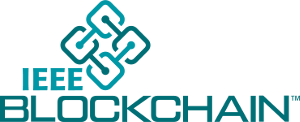Open Execution—The Blockchain Model
Khaled Salah, Khalifa University; Ernesto Damiani, Khalifa University; Ala Al-Fuqaha, Western Michigan University; Thomas Martin, Manchester Metropolitan University; Kamal Taha, Khalifa University; and M. Khurram Khan, King Saud University
IEEE Blockchain Technical Briefs, December 2018
In this article, we argue that blockchain has paved the way for an unprecedented, powerful phenomenon that is far superior to open source. We call this phenomenon “Open Execution.” As opposed to blackbox execution, open execution has the ability to verify, validate, and scrutinize the execution outcome, and thereby increasing the trust and credibility of execution. In this article, we discuss how blockchain is the right model and computing platform for open execution. We give a definition for open execution and describe a few use cases.
Introduction
Traditionally, the open source community has been highly successful in providing some level of flexibility and trust through the public review, inspection and scrutiny of source code. However, there are no guarantees that the code will run as promised. Typically, the execution output of the same source code can be different due to a multitude of reasons, such as differences in setup, hardware platforms, running environment. Even with the use of the right hooks, it could be possible to modify the same source code, yet have it look unchanged if inspected. In a way, the execution platform is seen as a blackbox, and its execution output cannot be trusted, checked, or scrutinized. We discuss in this paper how the blockchain execution model is changing all of this, where network nodes participating in maintaining the blockchain can execute code while providing high degrees of credibility, accuracy, and trust.
The Blockchain Model
The blockchain is one of the most hyped, recent technologies [1], and is predicted to have incredible growth, potential, and impact. Blockchain has been proven to be the preferred platform to facilitate and support cryptocurrencies. They enable transactions to be carried out in a decentralized, open, trusted, and secure manner. Records of these transactions are stored in a globally accessible ledger with high immutability, consistency, integrity, and with proof of history, traceability, and origination. Ample open source, online, web-based tools, frameworks and cryptocurrencies have been developed around blockchain to allow any user to access the provenance of any transaction, and trace its history. For example, there are publicly available tools that provide live traceability and live execution of Bitcoin transactions, mining, validation, and confirmation [2-4]. In the case of Bitcoin, traceability can be performed per Bitcoin address, block, or transaction.
The programmability of the Blockchain was introduced in 2014 by Vitalik Buterin [5] with the permissionless (or public) Ethereum Blockchain, and later by IBM with the Hyperledger permissioned (or private) Blockchain [6]. In February 2016, IBM donated nearly 44,000 lines of code to the Linux Foundation’s open-source Hyperledger Fabric Project. Both of these blockchain platforms offer the ability to upload code or smart contracts to the blockchain to be executed, with an execution outcome that is verified, validated, and confirmed by all miner nodes. Similar to cryptocurrency blockchains, both of the Ethereum and Fabric blockchains have a variety of online open-source tools, dashboards, and explorers that allow for high visibility of the blockchain ledger, its state, and execution outcomes. As in the case for cryptocurrency blockchains, online tools and explorers for the Hyperledger and Ethereum blockchains can be accessed through web browsers and allow searches per addresses of participants or smart contracts, transaction and block [7-9].
In the era of programmable blockchains and smart contracts, we are embarking on an unprecedented, powerful phenomenon which we call “open execution”. This is definitely more empowering and far superior when compared to the features offered through traditional openness which include open source, software, code, libraries, packages, and data. Undoubtedly, open source provided a good level of trust through code inspection and review by all. But the execution outcome and platform of that code can be very different. Whereas in open execution, we have the ability to execute code in a highly trusted and verifiable manner that will almost always yield the same exact execution outcome.
The term “Open Execution” can be defined as the ability to run code that is readable, executable, and verifiable by all and at any time, and with an execution output agreeable by the majority of the participating nodes. The term “Open Execution” was first coined in 2016 by Jason Carver in a LinkedIn blog [11].
The participating nodes (a.k.a. the miner nodes) are the necessary peers for the Hyperledger Blockchain, or the Ethereum Virtual Machines (EVM) for the Ethereum Blockchain. Typically, smart contract code can be read through an online explorer using a number of code representations:
- A high-level source code written in Solidity or Chaincode languages
- Bytecode
We have the ability to switch among these different code representations, and to instantly execute, verify, test them online through a browser integrated debugger and testing environment. As an example, [11] gives detailed information about a specific smart contract, its code with different representations, external transactions, internal transactions or output state, transferred tokens, etc. These detailed transactions and their associated execution outcomes are immutable, and open for anyone and at any time to explore, examine, validate, and scrutinize.
Use Cases of Open Execution
As of now, the blockchain is not an engine (or a computing platform) to run, in an open execution manner, all types of codes, services, or applications. However, there are many use cases and scenarios that are a good fit for open execution. We list and describe briefly a few of these use cases:
- Vote Counting: Citizens can have the ability to verify at any time the integrity of the government voting service in any elections to ensure their votes were counted properly—without duplicate counting and without manipulations of the total counts and outcomes.
- Stock Trading/Distributed Exchanges: Investors can ensure stock executions (selling or buying) and cryptocurrency exchanges are done accurately at a particular price exhibited by the market at a particular time.
- Gambling and Betting: Users can check the fairness of gambling and betting services, and trace back and verify their input, state, and history.
- Clinical Trials: Healthcare regulators, stakeholders and participants in clinical trials can verify the integrity and history of collected records, data, and drawn conclusions.
- Research Results: Researchers can verify the integrity of research results given in scientific publications to make sure the results are not fabricated, falsified, or manipulated.
- Crowd Sourcing/Sensing: Users can verify outcomes, predictions, or decisions extracted from the shared data generated by the masses while averting potential repudiation.
- Score Rating for Consumer Reviews: Today’s consumer and product online review systems are not credible and cannot be trusted, as scores and reviews can be manipulated by the service providers, or the centralized entity managing and running the review system. A blockchain-based review system with smart contracts can offer online users the ability to verify and validate online reviews and review scores given for a product, hospitality service, or any service provider.
Areas of Caution
Any new technology should be regarded with some degree of caution, and blockchains are no exception. An interesting new issue is an ideological division over what to do in the case of an error with massive implications. One camp believes that changes should be rolled back to fix the “mistake”, while the opposing camp believes “code is law”. This has led to a fork in the code, resulting in Ethereum and Ethereum Classic [12]. Such a fork does allow the market to decide which decision is preferred, but an over-abundance of forks will cause confusion. And not all “mistakes” are considered significant enough to merit a fork [13].
Conclusion
To date, execution of code has been done as a blackbox where the execution outcome cannot be validated or verified. In the near future, it is envisaged that users, customers, and citizens will not settle for less than open execution especially when it comes to critical services as those seen in financial transactions and vote counting. Blockchain technology offers the perfect platform for open execution. More attention and efforts are needed by the community to design, develop, and build the right set of architectures, frameworks, tools, and packages to run critical services in an open execution manner using blockchain platforms.
References
[1] Panetta, “Top Trends in the Gartner Hype Cycle for Emerging Technologies, 2017,” August 15, 2017
[2] Blockchain.info, Available at https://blockchain.info/
[3] Block Explorer, Available at https://blockexplorer.com/
[4] Trade Block, Available at https://tradeblock.com/bitcoin/
[5] V. Buterin,”A next-generation smart contract and decentralized application platform”, Whitepaper, 2014.
[6] IBM Blockchain, Available at https://www.ibm.com/blockchain/platform/
[7] Hyperledger, Available at https://hyperledger.org/projects/explorer
[8] Bestblock, Available at https://ethstats.net/
[9] Etherscan : The Ethereum Block Explorer, Available at https://etherscan.io/
[11] J. Carver, “How "Open Execution" will replace Open Source”, April 5, 2016, Available at https://www.linkedin.com/pulse/how-open-execution-replace-source-jason-carver/
[12] V. Buterin, “Hard fork completed”, Available at https://blog.ethereum.org/2016/07/20/hard-fork-completed/
[13] J. Buntinx, “Parity Will Not Pursue Hard For to Unfreez 500000 Ether”, Available at https://themerkle.com/parity-will-not-pursue-hard-fork-to-unfreeze-500000-ether
 Khaled Salah is a full professor at the Department of Electrical and Computer Engineering, Khalifa University, UAE. He received the B.S. degree in Computer Engineering with a minor in Computer Science from Iowa State University, USA, in 1990, the M.S. degree in Computer Systems Engineering from Illinois Institute of Technology, USA, in 1994, and the Ph.D. degree in Computer Science from the same institution in 2000. He joined Khalifa University in August 2010, and is teaching graduate and undergraduate courses in the areas of cloud computing, computer and network security, computer networks, operating systems, and performance modeling and analysis. Prior to joining Khalifa University, Khaled worked for ten years at the department of Information and Computer Science, King Fahd University of Petroleum and Minerals (KFUPM), KSA.
Khaled Salah is a full professor at the Department of Electrical and Computer Engineering, Khalifa University, UAE. He received the B.S. degree in Computer Engineering with a minor in Computer Science from Iowa State University, USA, in 1990, the M.S. degree in Computer Systems Engineering from Illinois Institute of Technology, USA, in 1994, and the Ph.D. degree in Computer Science from the same institution in 2000. He joined Khalifa University in August 2010, and is teaching graduate and undergraduate courses in the areas of cloud computing, computer and network security, computer networks, operating systems, and performance modeling and analysis. Prior to joining Khalifa University, Khaled worked for ten years at the department of Information and Computer Science, King Fahd University of Petroleum and Minerals (KFUPM), KSA.
Khaled has over 190 publications and 3 US patents, has been giving a number of international keynote speeches, invited talks, tutorials, and research seminars on the subjects of Blockchain, IoT, Fog and Cloud Computing, and Cybersecurity.
Khaled was the recipient of Khalifa University Outstanding Research Award 2014/2015, KFUPM University Excellence in Research Award of 2008/09, and KFUPM Best Research Project Award of 2009/10, and also the recipient of the departmental awards for Distinguished Research and Teaching in prior years.
Khaled is a senior member of IEEE, and serves on the Editorial Boards of many WOS-listed journals including IET Communications, IET Networks, Elsevier's JNCA, Wiley's SCN, Wiley's IJNM, J.UCS, and AJSE. Khaled is the chair of the Track Chair of IEEE Globecom 2018 on Cloud Computing. He is the main keynote speaker of the 15th IEEE AICCSA2018 conference http://www.aiccsa.net/AICCSA2018/keynote-speakers-2 His keynote speech is entitled, “Blockchain: a New Disruptive Force.”
 Prof. Ernesto Damiani is a full professor at the Department of Electrical and Computer Engineering, Khalifa University, UAE. He is the Director of Cyber Physical Systems Research Center at Khalifa University of Science and Technology. He received his M.S. degree in Computer Engineering from Università di Pavia, Italy, in 1987 and the Ph.D. degree in Computer Science from Università degli Studi di Milano, Italy, in 1994. He joined Khalifa University in 2014 as a Full Professor, Director of the Information Security Research Centre. His research interests include secure service-oriented architectures, privacy-preserving Big Data analytics and Cyber-Physical Systems security. With 420 publications listed on DBLP, he is considered among the most prolific European computer scientists.
Prof. Ernesto Damiani is a full professor at the Department of Electrical and Computer Engineering, Khalifa University, UAE. He is the Director of Cyber Physical Systems Research Center at Khalifa University of Science and Technology. He received his M.S. degree in Computer Engineering from Università di Pavia, Italy, in 1987 and the Ph.D. degree in Computer Science from Università degli Studi di Milano, Italy, in 1994. He joined Khalifa University in 2014 as a Full Professor, Director of the Information Security Research Centre. His research interests include secure service-oriented architectures, privacy-preserving Big Data analytics and Cyber-Physical Systems security. With 420 publications listed on DBLP, he is considered among the most prolific European computer scientists.
Ernesto Damiani has authored 99 journal papers, 276 refereed articles in proceedings of international conferences, and published 25 books and chapters as an author or editor. He has been Principal Investigator in a number of large-scale research projects funded by the European Commission, the Italian Ministry of Research and by private companies such as British Telecom, and Cisco. Ernesto serves in the editorial board of several international journals and is a senior member of the IEEE and served as Vice-Chair of the IEEE Technical Committee on Industrial Informatics. In 2008, Ernesto was nominated ACM Distinguished Scientist and received the Chester Sall Award from the IEEE Industrial Electronics Society. Ernesto has co-authored over 350 scientific papers and many books, including "Open Source Systems Security Certification" (Springer 2009).
 Dr. Ala Al-Fuqaha is a Professor and director of NEST-IoT Research Lab at the Computer Science Department of Western Michigan University. He received the B.S. degree in Computer Engineering from King Fahd University of Petroleum and Minerals, the M.S. degree in Electrical and Computer Engineering from University of Missouri-Columbia , and the Ph.D. degree in Computer Engineering and Networking from University of Missouri-Kansas City.
Dr. Ala Al-Fuqaha is a Professor and director of NEST-IoT Research Lab at the Computer Science Department of Western Michigan University. He received the B.S. degree in Computer Engineering from King Fahd University of Petroleum and Minerals, the M.S. degree in Electrical and Computer Engineering from University of Missouri-Columbia , and the Ph.D. degree in Computer Engineering and Networking from University of Missouri-Kansas City.
Dr. Al-Fuqaha served as the Principal Investigator or Co-PI on multiple research projects funded by NSF, MDOT, Qatar Foundation, Cisco, Boeing, AVL, Stryker, Wolverine,Traumasoft, and Western Michigan University. Currently, he is working on an entrepreneurial initiative to spin a startup company from Western Michigan University to offer innovative hardware and software solutions in support of real-time locating services (RTLS).
His research interests include the use of public ledgers to secure Internet of Things (IoT) and smart city services, the use of machine learning in general and deep learning in particular in support of the data-driven and self-driven management of large-scale deployments of IoT and smart city infrastructure and services, Wireless Vehicular Networks (VANETs), intelligent services for the blind and the visually impaired, QoS routing in optical and wireless networks, and performance analysis and evaluation of high-speed computer and telecommunications networks.
He was the recipient of the outstanding researcher award at the college of Engineering and Applied Sciences of Western Michigan University in 2014. In 2018, he received the Best Survey Award from the IEEE Communications Society. He is currently serving on the editorial board for IEEE Communications Letters, Springer AJSE, Industrial Networks and Intelligent Systems Journal, International Journal of Computing and Digital Systems, and International Journal of Multimedia. He is an IEEE senior member and an ABET Program Evaluator (PEV). He served on editorial boards and technical program committees of multiple international journals and conferences.
 Dr. Thomas Martin is currently working as a Senior Lecturer in School of Computing, Mathematics and Digital Technology in Manchester Metropolitan University. He received his M.Sc. in Information Theory, Coding and Cryptography from University of College Cork, Ireland in 2000 and the Ph.D. in Cryptography from Royal Holloway, University of London in 2004.
Dr. Thomas Martin is currently working as a Senior Lecturer in School of Computing, Mathematics and Digital Technology in Manchester Metropolitan University. He received his M.Sc. in Information Theory, Coding and Cryptography from University of College Cork, Ireland in 2000 and the Ph.D. in Cryptography from Royal Holloway, University of London in 2004.
His professional and academic interests include delivering high quality teaching and conducting research in the fields of Digital Forensics and Security. He has special interest in the emerging fields of Blockchains and Crypto currencies. Prior joining to Manchester Metropolitan University, Dr. Thomas worked as an Assistant Professor in Khalifa University, Abu Dhabi, and UAE for more than 6 years and delivered M.Sc. courses: Introduction to Cryptography, Computer Security, and Identity Management. He is experienced in developing and designing graduate curriculum. His research covers the areas of DRM, malware, hacker analysis and forensics. He worked as a Security Research Professional at British Telecom (BT) for 4 years since October 2004 until 2009. During his tenure at BT, he worked on TPM, IdM, Bayesian modeling and risk. He has many publications in the area of cybersecurity, digital forensics, and Blockchain.
 Dr. Kamal Taha is an Associate Professor in the ECE Department. He received the M.S. degree in Software Engineering from University of St. Thomas, USA, in 2002, and the Ph.D. degree in Computer Science from University of Texas at Arlington in 2010. He joined Khalifa University in August 2010, and is teaching courses in Database Systems, Data Structure & Algorithms, Principles of Computer Programming, System Analysis & Design and Human Computer Interface. Prior to joining Khalifa University, he worked as an Instructor of Computer Science at the University of Texas at Arlington, USA, from August 2008 to August 2010. He worked as Engineering Specialist for Seagate Technology, USA, from 1996 to 2005 (Seagate is a leading computer disc drive manufacturer in the US).
Dr. Kamal Taha is an Associate Professor in the ECE Department. He received the M.S. degree in Software Engineering from University of St. Thomas, USA, in 2002, and the Ph.D. degree in Computer Science from University of Texas at Arlington in 2010. He joined Khalifa University in August 2010, and is teaching courses in Database Systems, Data Structure & Algorithms, Principles of Computer Programming, System Analysis & Design and Human Computer Interface. Prior to joining Khalifa University, he worked as an Instructor of Computer Science at the University of Texas at Arlington, USA, from August 2008 to August 2010. He worked as Engineering Specialist for Seagate Technology, USA, from 1996 to 2005 (Seagate is a leading computer disc drive manufacturer in the US).
His research interests includes Knowledge discovery and data mining, Query processing and optimization, Bioinformatics databases, Recommendation systems, Social networks Information Forensics & Security, information retrieval, datamining, and databases. Dr. Kamal is an editorial board member for many international journals like Austin Journal of Biomedical Engineering, Journal of Software, Journal of Biochemistry and Molecular Biology Research, International Journal of Soft Computing & Software Engineering to name a few. He was the recipient of the Certificate of Appreciation for Excellent Publication Record from Khalifa University in May 2014. He was awarded the Certificate of Appreciation for Active External Collaboration in Research in May 2012. Kamal has many international publications, has been giving a number of international keynote speeches, invited talks, tutorials, and research seminars.
 Dr. Muhammad Khurram Khan is currently working as a Full Professor at the Center of Excellence in Information Assurance (CoEIA), King Saud University, Kingdom of Saudi Arabia. He is one of the founding members of CoEIA and has served as the Manager R&D from March 2009 to March 2012. He developed and successfuly managed the research program of CoEIA, which transformed the center as one of the best centers of research excellence in Saudi Arabia as well as in the region.
Dr. Muhammad Khurram Khan is currently working as a Full Professor at the Center of Excellence in Information Assurance (CoEIA), King Saud University, Kingdom of Saudi Arabia. He is one of the founding members of CoEIA and has served as the Manager R&D from March 2009 to March 2012. He developed and successfuly managed the research program of CoEIA, which transformed the center as one of the best centers of research excellence in Saudi Arabia as well as in the region.
Prof. Muhammad Khurram Khan is the Editor-in-Chief of a well-esteemed ISI-indexed international journal 'Telecommunication Systems' published by Springer-Verlag since 1993 with an impact factor of 1.542 (JCR 2016). He is the Founding Editor of ‘Bahria University Journal of Information & Communication Technology (BUJICT)’.
Furthermore, he is the full-time Editor/Associate Editor of several ISI-indexed international journals/magazines, including IEEE Communications Surveys & Tutorials, IEEE Communications Magazine, Journal of Network & Computer Applications (Elsevier), IEEE Transactions on Consumer Electronics, IEEE Access, Security & Communication Networks, IEEE Consumer Electronics Magazine, Journal of Medical Systems (Springer) etc.
He has been awarded a Gold Medal for the ‘Best Invention & Innovation Award’ at 10th Malaysian Technology Expo 2011, Malaysia. Moreover, his invention recently got a Bronze Medal at '41st International Exhibition of Inventions' at Geneva, Switzerland in April 2013. In addition, he was awarded best paper award from the Journal of Network & Computer Applications (Elsevier) in Dec. 2015.
Prof. Khurram has published over 325 research papers in the journals and conferences of international repute His research areas of interest are Cybersecurity, digital authentication, biometrics, multimedia security, and technological innovation management. Prof. Khurram has played a leading role in developing 'BS Cybersecurity Degree Program' and 'Higher Diploma in Cybersecurity' at King Saud University.
Editor:
 Jiang Xiao is currently an associate professor in School of Computer Science and Technology at Huazhong University of Science and Technology (HUST), Wuhan, China. She received the BSc degree from HUST in 2009 and the PhD degree from Hong Kong University of Science and Technology (HKUST) in 2014. She has been engaged in research on wireless indoor localization, smart sensing, big data analysis, and distributed computing. Jiang has directed and participated in many research and development projects and grants from funding agencies such as National Natural Science Foundation of China (NSFC), Hong Kong Research Grant Council (RGC), Hong Kong Innovation and Technology Commission (ITC), and industries like Huawei, Tencent and Intel, and been invited by NSFC in reviewing research projects. Her awards include CCF-Intel Young Faculty Research Program 2017, and Best Paper Awards from IEEE ICPADS/GLOBECOM.
Jiang Xiao is currently an associate professor in School of Computer Science and Technology at Huazhong University of Science and Technology (HUST), Wuhan, China. She received the BSc degree from HUST in 2009 and the PhD degree from Hong Kong University of Science and Technology (HKUST) in 2014. She has been engaged in research on wireless indoor localization, smart sensing, big data analysis, and distributed computing. Jiang has directed and participated in many research and development projects and grants from funding agencies such as National Natural Science Foundation of China (NSFC), Hong Kong Research Grant Council (RGC), Hong Kong Innovation and Technology Commission (ITC), and industries like Huawei, Tencent and Intel, and been invited by NSFC in reviewing research projects. Her awards include CCF-Intel Young Faculty Research Program 2017, and Best Paper Awards from IEEE ICPADS/GLOBECOM.
Subscribe to the IEEE Blockchain Technical Briefs
Join our Blockchain Technical Community and receive our Technical Briefs by email.
IEEE Blockchain Technical Briefs Editorial Board
Gora Datta, FHL7, SMIEEE, SMACM, Managing Editor
2024 Editorial Team
Justin Y. Shi, PhD, Editor-in-Chief
Boleslaw K. Szymanski, PhD
R.L. Shankar, PhD
Imran Bashir
Nicolae "Nicu" Goga, PhD
Constantin “Viorel” Marian, PhD
View the 2023 IEEE Blockchain Technical Briefs Editorial Board
View the 2022 IEEE Blockchain Technical Briefs Editorial Board
View the 2018-2020 IEEE Blockchain Technical Briefs Editorial Board
Past Issues
Read the top five most popular IEEE Blockchain Technical Briefs articles.
Read more (PDF, 731 KB)



